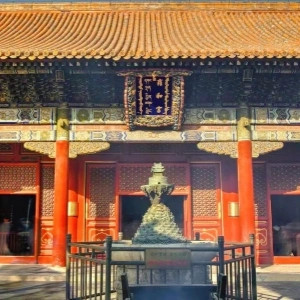Spring (March to May): Temperatures gradually pick up in spring, but there is a big difference between morning and evening temperatures. The average temperature across the province gradually rises from the low temperatures of winter, but the exact temperature varies from region to region, e.g. southern Jiangsu may be warmer than northern Huabei. Spring precipitation gradually increases, but is generally more moderate. Spring rains are favorable for crop growth, but may also bring some dampness. Spring weather is variable, sometimes sunny and warm, sometimes rainy. At this time, the phenomenon of “spring cold” often occurs in Jiangsu, which means that the temperature suddenly drops, so it is necessary to pay attention to keep warm.
Summer (June to August): Summer is the hottest season in Jiangsu, with high average temperatures across the province, especially in July and August, when some areas may reach over 35℃ or even over 40℃. Summer precipitation is abundant and strong convective weather such as thunderstorms and rainstorms often occur. These precipitations play a role in relieving high temperatures and droughts, but may also cause disasters such as flooding. The weather in summer is mainly hot and humid, with strong sunlight and high ultraviolet radiation. People need to pay attention to prevent heat stroke and sunburn.
Fall (September to November): Temperatures gradually drop in the fall, but remain generally more pleasant. The average temperature in the province gradually falls back from the high temperatures of summer, and the temperature difference between morning and evening begins to increase. Precipitation is relatively low in the fall, but showers or light rain still occur. At this time, Jiangsu area often has good weather with high autumn sky and high clouds. Autumn is one of the peak tourist seasons in Jiangsu, with pleasant weather for outdoor activities. However, it is necessary to pay attention to the big temperature difference between morning and evening, and increase or decrease clothing in due time.
Winter (December to February): Winter temperatures are low, with the average temperature of the province hovering around 0℃. Huaibei area may be colder, with freezing and snowfall. Winter precipitation is low, with rain and snow dominating. However, in recent years, due to the impact of global climate change, Jiangsu may also experience a warm winter, with precipitation in the form of rain. Winter weather is cold and dry, so you need to pay attention to prevent cold and keep warm. At the same time, winter is also one of the high incidence of haze weather, need to pay attention to air quality changes and take appropriate protective measures.
Explore our recommended itineraries and contact us to customize your ideal Jiangsu adventure.
3-Day Hangzhou, Suzhou and Shanghai Tour
Related Posts
Create Your Customized Trip
Take about 2 minutes to fill the form to tell us how you like to travel, and get a reply within 1 working day.









